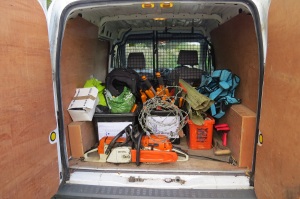Volucella inanis
by Ian Bushell
Email from Dr R.L.Brown, of Manaaki Whenua Landcare Research, NZ:
Hi Ian,
Yes, I am back in NZ and still moderately jet-lagged! Thanks for sending the link to your webpage. I found two of my target species: Volucella inanis and Metoecus paradoxus, as well as Volucella zonaria, and Cryptophagus sp. both of which are thought to be scavengers in the nests. Although, as soon as the colony declines and the social roles erode in the nest, the V. zonaria larvae will quickly become predators of the wasp grubs. Hope to see you next year.
Cheers,
Bob
Volucella inanis is the scientific name of the Lesser Hornet Hoverfly, the smaller of the two hornet mimicking Volucella species. From May to September, the adult flies feed on the pollen from a wide variety of the reserve’s plants: yarrow, hogweed, thistles and our plentiful blackberries.


After mating, the female lays her eggs just a few inches from the entrance to a wasp nest. She is very cautious, relying on her yellow and black colouration as camouflage, because if she is detected, the wasps will kill her. Over the whole season, she will lay up to 300 eggs.
The eggs hatch after five days and the larvae move into the nest, where each seeks out and enters a cell with a wasp grub in its 1st or 2nd larval stage. There the Volucella larva eats the grub’s excretions until the grub spins its cocoon. At this point the hoverfly larva breaks open the cocoon and sucks out the contents; it may do this to several cells. At some point it will leave the nest to pupate in the ground underneath, emerging as an adult fly in the following spring.
Video by Dr R.L.Brown
Volucella inanis is a European native and here in the UK we are on the western edge of its range. Before 1960, that range seemed to contract but then remained constant, concentrated in the south east of England, until the 1990s. At the moment there is evidence that the species is expanding its range rapidly to the west and north. It is assumed that this is the outcome of climate change.
As Volucella inanis predates only Eurasian hornets, common wasps and German wasps, researchers in New Zealand seem confident that its introduction can be safely confined to the areas where Common and German Wasps, invasive aliens, have become such an ecological threat.
Click for International cooperation part 1






What a fascinatingly horrible bit of video!
It is quite startling. But we have to learn to value what David Attenborough calls The Whole Thing: the scary wasps and hornets, their squishy grubs, the horror show activities of the Volucella larvae and finally the New Zealand entomologist looking for solutions to man-made problems.